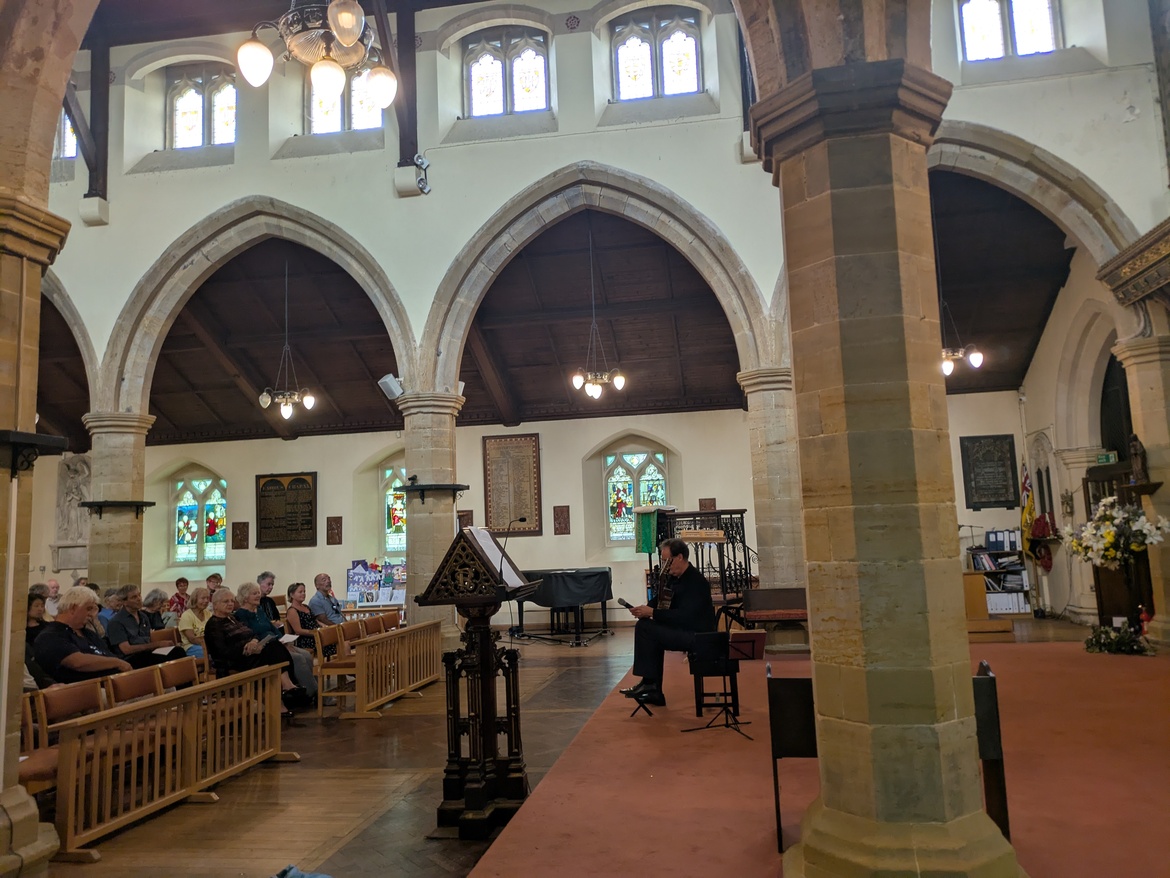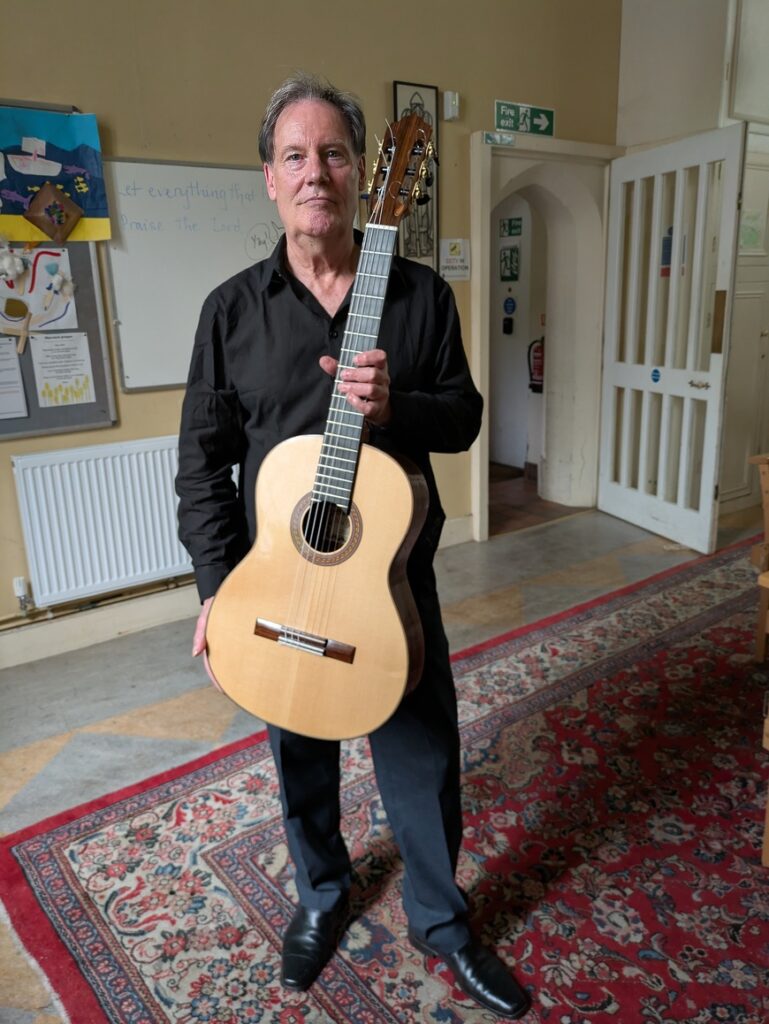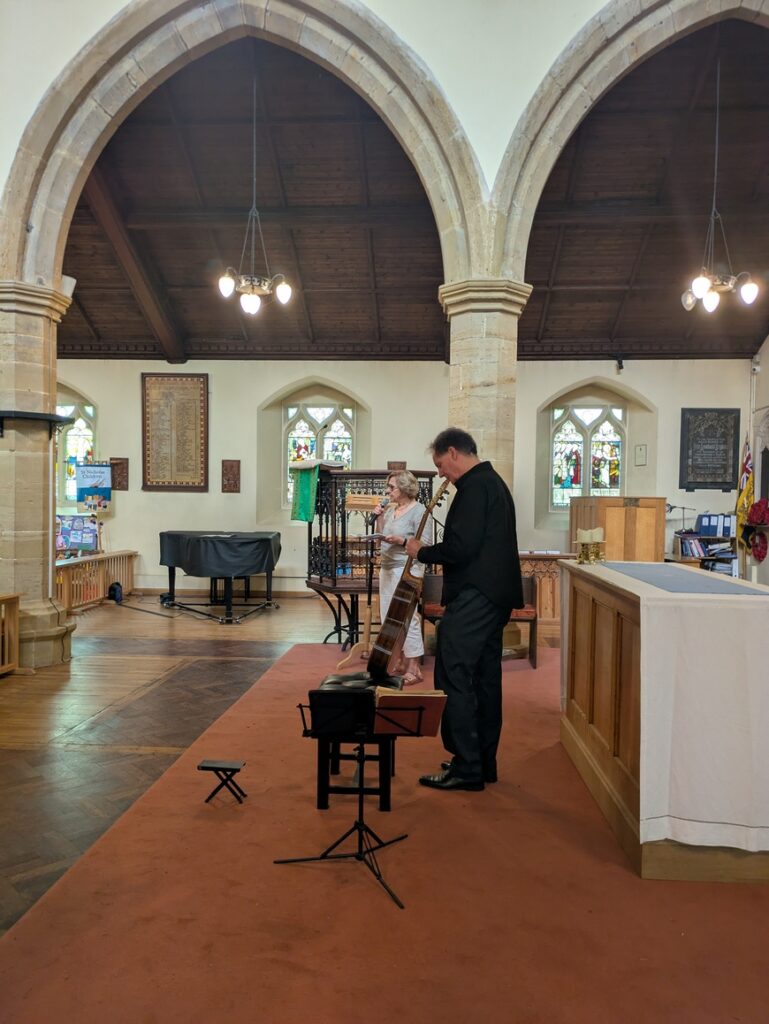Review by Simon Jenner, 30 July 2025
Renowned guitarist Paul Gregory returns with a concert to memorialize the death of his pupils Richard Bowen, whose last recital here was on May 8th last year. His wide-ranging repertoire was encouraged by Gregory who returns the compliment by laying some of the pieces both explored.
Johann Paul von Westhoff (1656-1705) is a mid-period German baroque composer, mainly known for the violin. Like his older contemporary Johann Heinrich Schmeltzer, and younger ones like Bach’s friend Leopold Weiss who composed for the lute, Westhoff would have been at home on the lute. His Suite No.6 in four movements is beguiling and flowery. Moving from mildly bracing Allemande, runnable Courante, a more flowing than usual Sarabande and perky Gigue it covers the classical dance sequence of the time, derived from French models. It’s a superb rare treat. Typical of Gregory who dispatches it with elan and grace.
Luigi Legnani (1790-1877) a colleague of Paganini’s when the latter write for violin and guitar duos, is an experimenter. His 36 (here just 5) Caprices Op 20 explore such guitar rarities as G sharp minor. The early romanticism is both coolly elegant and appealingly melodic. Crisp studies move from expressive minor and major with similar tempi. They are Caprices. The minor keyed ones here are the most intriguing. Occasionally there’s more emphatic wit as in the Caprice opening with a three-note motif.
Peter Maxwell Davies’ Farewell to Stromness from 1980 is justly celebrated as a warm lament for an island threatened with uranium mining. Normally heard on the piano it’s strumming saying lament works beautifully on the guitar. Bowen loved this piece above most others. Scotch snap with ‘fare well’ and the matchers’ protests built in, it’s based on a Scottish folk song but distantly.
Gregory plays this hypnotically, characterising it with its radical elements not always seen with decades of smoothing over. Particularly haunting is the central section of matching feet in the plangent then resolute minor.
Vincente Asencio (1908-79) is another discovery. His Suite Valenciana is self-explanatory; sort of. In its ‘Preludi’, ‘Canzonetta’ and ‘Dansa’ it classically contains sunlight in darkness. Seven years younger than Rodrigo Asencio explored Ravelian diamond-sharp impressionism: an oxymoron Ravel specialised in. And in his three-movement Sonata in all but name Asencio covers ground Rodrigo hinted at in the slow movement to his own Concerto de Aranjuez.
This is though a sublimated lament for the times. Echoes of the Spanish Civil War are hinted then stated in the ‘Preludi’. Chromatic descending themes that dissolve only at the end.
The ‘Canzonetta’ is the bleak, nakedly spacious heart of the work. Small runs up the scale are interspersed with broken chords and an interrupted processional; a dogged sense of something almost being said.
The ‘Dansa’ uneasily banishes these memories, in a quasi-habanera rhythm. Again there’s breaks and thrusts forward. There’s echoes of de Falla. It ends on dark flourishes.
The last piece is a built-in encore by the first great Spanish Romantic composer Isaac Albeniz (1860-1909). His piano pieces from his Suite Espana were all transposed for the guitar with Albeniz’ blessing by Francisco Cavalli.
All have place names. ‘Sevilla’ is a jaunty evocation of the southern city, home if oranges and moist heat.
Gregory plucks the heart of its lightly-held but subtle mystery. In particular he explores sudden breaks and switches of tempo and material. He lets the music breathe in the ideal acoustic of St Nicholas, and clearly revels in brief silences.
Though this is an idyll from an earlier innocence, one can hear the tensions of Spanish self-assertion and musical consciousness emerge. Something that defined the soul of independence. An exhilarating recital, a true gem and above all tribute to the much-missed Richard Bowen; whose presence was felt by several, including Gregory himself




